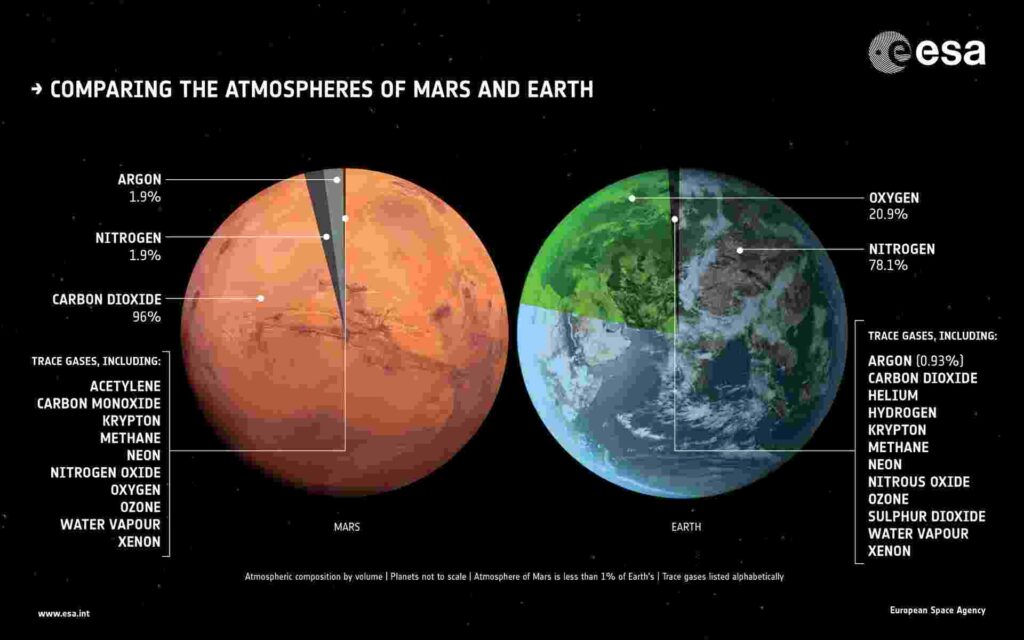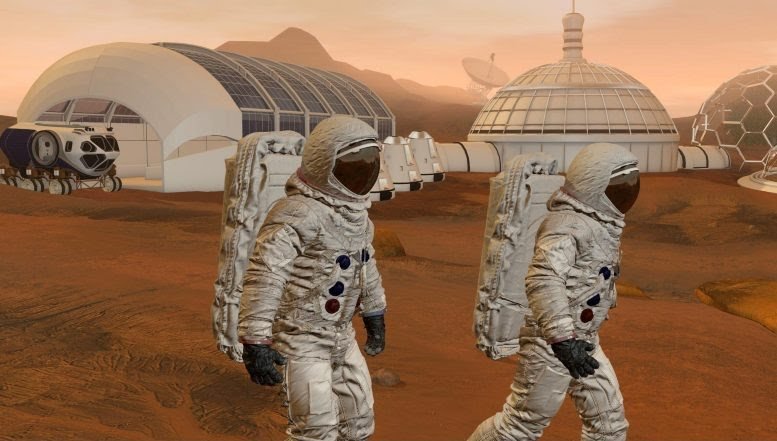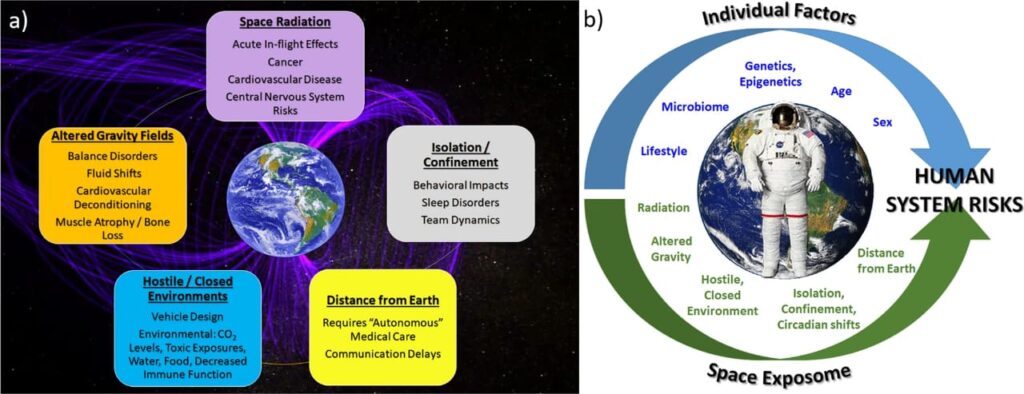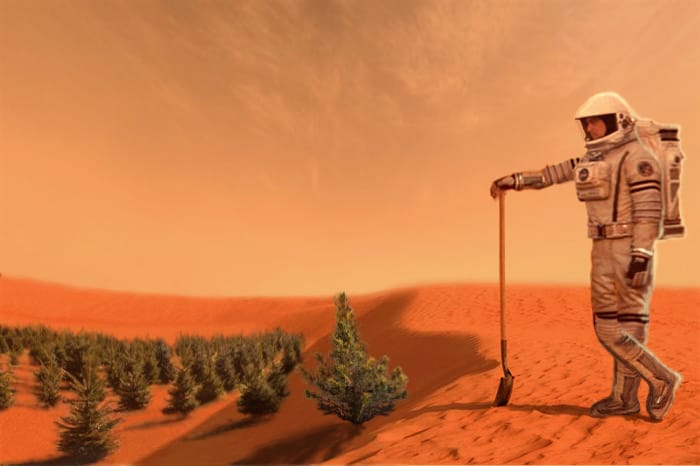Imagine waking up one day and you realise that you are on some other planet! Isn’t it the thing of fantasies? But sooner or later, this fantasy could be a reality, albeit for some lucky ones.
Just answer this simple question? What if, we ask you whether you want to go to any other planet! What would be your response? I can guess that most of the people interested in space and the universe just like me would without a doubt say a yes. Most people would love the opportunity to go on some other planet and explore it for the first time among humans. Now, this hypothetical situation can also be a reality. What we are talking about is the first human civilisation on Mars!
(What will the first human settlement on Mars be like?) we will learn in this article. There are questions like, “What issues will we have to deal with?” on the list. Is this going to be a piece of cake? No, it won’t be simple, but how long will it take humanity to colonise Mars in the same way it did Earth?
Let’s go deeper into the topic and examine the first human settlement on Mars in depth! Many other questions about Mars would be answered as well.
Read: Elon Musk Has a New Date for Humans To Reach On Mars
What are the similarities and dissimilarities between Earth and Mars?

Mars and Earth have a lot of similarities. Some of the notable ones:
- A day on Earth (Earth day) is around 24 hours. A day on Mars (Martian day) is almost similar at 24 hours and 40 minutes. Mars has a radius half as that of Earth and mass around one-tenth of Earth. This eventually means it has less volume and lower density than Earth.
- Earth’s tilt along its axis is 23.44 degrees while Mars’ tilt is 25.19 degrees. This results in similar seasons on Mars but they last much longer due to the longer length of the Martian year which is 1.88 times Earth year.
- Observations from some prominent space research organisations have also confirmed the presence of water on the planet.
That said, Mars and Earth are quite different in several aspects as well such as:
- Mars’s gravity is just 38% of Earth’s surface gravity which could eventually lead to muscle loss and bone demineralisation.
- Mars also has a weak magnetosphere which allows solar radiations and cosmic rays to reach the surface of the planet.
- The major difference arises in the atmosphere. While the atmosphere on Earth consists of primarily Nitrogen and Oxygen, it is composed of carbon dioxide, 95% on Mars. Thus the atmospheric pressure is quite low, which humans can’t survive without pressure suits.
- The atmosphere of Earth is quite thick which prevents harmful rays of the Sun to reach the surface. This is not the case with Mars. It has a thin atmosphere which doesn’t prevent the rays and leads to a great difference between the day and night temperatures.
- Mars is much colder than our Earth. Due to its larger distance from Sun, it receives much less heat and hence colder temperatures.
- The soil of Mars is also considered to be toxic due to high concentrations of harmful chemicals in it.
But even with these challenges, it is the human tendency to defy everything. Even when the odds are against us, mankind hasn’t taken a step back and is still looking for ways to colonise Mars. What do we need to do to live on Mars? Let us know!
What are the conditions required for human settlement on Mars?

Although the conditions on Mars are both similar and different from that of Earth’s, they are the best available to us among all the planets or moons. The only exceptions are the floating cities on the clouds of Venus. If you want to know more about them, you can hop over to our “What will happen if we terraform Venus?” article and know more about it.
But still due to less air pressure, a thin atmosphere and solar radiation, the surface isn’t livable for human beings. Humans have explored various parts of Mars that are alike Earth such as regions of Antarctica that have temperatures nearing those on Mars. In the initial stages, human settlements on mars would require completely artificial habitats with life-supporting systems since Mars doesn’t have the required conditions for life.
One of the most important factors would be water. Our human body is 70% of water and even a 10% decrease causes physical and mental impairment. In the initial stages, water would be transported from Earth to Mars by NASA. More water could be drilled in a frozen state from underneath the surface.
For converting Mars into an Earth-like planet, terraformation is a possible way. It refers to the use of engineering techniques to convert a planet into a hospitable planet. For more details about the terraformation of Mars, hop over to the article “what will happen if we terraform Mars?” Concepts have been put forward for terraformation but no such method can convert a whole planet into a life-supporting planet. Additionally, any changes would take potentially hundreds or thousands of years.
What are the risks for the early humans on Mars?

Living on Mars for the first humans from Earth would be no easy thing. Our body is made and has adapted according to the conditions of Earth. Conditions of Mars are adversely different from Earth and would show the effect on our body. This will include:
1. Effects due to radiation
As said above, the atmosphere of Mars is a lot thinner than Earth. The weak magnetosphere would not stop any radiations of the Sun. They would reach the surface and will cause risks to the human. These radiations are of two types namely: Galactic cosmic rays and solar energetic particles. A report published in 2009 suggested that these rays make Mars a difficult place to visit with the existing technology.
2. Physical Effects
The gravity on Mars is quite low than on Earth. The difference in gravities will affect humans largely. It will weaken the bones and muscles. Cardiovascular problems may also be more prominent. Normally, 70% of our blood remains below the heart. In microgravity, this is no the case. Essentially, blood pressure in the lower body would substantially reduce making them a lot weaker. Once a human reaches Mars, health issues will creep in and in the case, he returns to Earth, the bone and muscle loss would take a long time to recover. Microgravity could show effects during the entire lifetime.
3. Psychological Effects
People on Mars are expected to feel isolated. They may develop some problems due to repetitive tasks, living in closed quarters and staying isolated. One of the most important things to note while going to Mars is that the person should pass all the psychological screenings.
Read more: Could We Actually Survive On Mars? The Real Problem Living on Mars
How would we go to Mars? What are Elon Musk’s plans for it?
For reaching Mars, a strong spaceship would be required. That’s where Elon Musk and his SpaceX is becoming a beast. Musk is an envision madman with some high goals. According to him, humans could begin flying to Mars by the mid-to-end of 2020s.
Musk’s plans begin with a huge rocket, at least 200 feet tall when completely assembled. SpaceX calls it the Interplanetary Transport System. The spacecraft is filled with astronauts on top of a 39-feet wide booster. This booster is capable of producing a thrust of around 28 million pounds. The 42 Raptor engines incorporated would accelerate the spacecraft to speeds of 5374 miles.

Beating the current largest rocket, Saturn V, this will be more than 3.5 times stronger than it. It will also launch from the same space pad, from which the Saturn V launched, the 39A at Kennedy Space Center in Florida.
On its route to mars, the spaceship will use solar panels to generate energy and conserve valuable fuel for the landing part. according to musk, the capsule carrying the men would be in earth’s orbit till both the planets are at the nearest which occurs once in 26 months. can you guess what would be the most difficult portion of this journey? surely, it has to be the landing. spacex is planning to develop supersonic retrorockets for lowering a spacecraft as heavy as musk’s.
He estimates that reusability will be the key to the mission. In the beginning, around 100 personnel would be riding the ship, a number which would gradually increase. Elon’s goal is to transport around 1 million people to Mars and he estimates that it would take somewhere around 50 to 100 years after the first space flight.
The beginning journeys would be majorly for transportation of supplies and preparing a fuel depot on the surface.After that, the first humans will have to be good diggers and bring up the ice under the surface.
Musk believes that only those who are explorers at heart can be eligible for this mission. He says that if one is ready to die and doesn’t care what happens, he is eligible for the mission.
What do scientists believe about the first settlements?
Recent researches on the planet for the first human settlement on Mars are being done by public agencies like the ESA, NASA, ISRO, CNSA, Roscosmos, UAE and private agencies like SpaceX, Boeing and Lockheed Martin.
According to scientists, water is the key. They believe that the process would be much more in the order of sending humans to Mars, setting up operations, using robots to find water and then extract hydrogen for energy needs. Developments in the robotics field and autonomous systems is of utmost importance for all these processes.
Research has been continuously going on and a lot depends on what number of people are going to Mars. Elon Musk claims to send nearly a million people by 2050 by 1000 Starships by SpaceX. Experts say that they have the technology and the knowledge. The problem lies in the cost and revenues.
They believe that landing on Mars can be done sometime soon but they deny the facts proposed by Musk. They claim that settlements by humans on Mars can be estimated by 2050 but the levels cannot be the ones as said by Musk.
What are the things required for human settlements on Mars?
Did you ever think about what things you need to live on Mars? Even simple things which we neglect on Earth-like oxygen, water would be huge in context to Mars. Starting life on Mars would require every basic thing. Everything ranging from the production of food to fuel, energy, water and especially oxygen. The following list depicts some of the most important required by the first human settlements on Mars.
- Basic amenities’ like oxygen, power supply, water, hydrogen, sanitation, waste disposal and recycling techniques
- Storage facilities
- Habitats
- Fuel or energy source for transportation
- Energy production system
- Workspaces for research
- Food production
- Communication systems for connecting with those on Earth
- Motion equipment Spacesuits and protective gears
Possible locations on Mars for settlements
- Lava tubes – some lava tubes on Mars’ surface have been located on the flanks of Arsia Mons. Research suggests that some of them could be long and could offer protection from harmful radiation. They would be easier to seal using the available materials, making them a possible location for the first human settlement on Mars.
- Equatorial regions – speculations say that humans could benefit from the shelter the natural caves will provide. They could also prevent radiations and small meteoroids.
- Hellas Planitia – It is the lowest-lying region below the geodetic datum. The air pressure is much higher here in comparison to rest of the Mars.
What is the MARS ONE mission?
Have you heard about the Mars ONE mission? If yes, then great. If no, then we are here!
Mars One aims to make a permanent human settlement on the surface of Mars. The Mars One crews going to Mars won’t only visit the planet, they will live there, explore and try to create a second home for humanity. They want to write history by sending the first men and women to Mars and creating a settlement over there.
The mission was inaugurated in 2011 and in 2013, people from all over the world were chosen for the mission. The selection was a tough one and sex teams of four members each were formed. In 2018, formal training of these teams began and they will train till 2031. Meanwhile, they will learn all the aspects from repairing to medical procedures and growing food as well. A demo mission is expected to be launched next year to provide evidence of the concept of technologies used.
2024 will see the launch of a communication satellite followed by the launch of a rover and another communication satellite in 2026. Further later in 2029, six cargo missions will be launched containing another rover, life support units, living units and supply unit.
The D-day or we should say the D-year will arrive in 2031 when the first crew will fly off after the checks from all systems on Mars. Somewhere in 2032, the crew will land on Mars after detaching from the transit module. The landing module will land on Mars and the transit module would remain in the orbit. In 2033, the second crew will launch along with the cargo modules for the third crew.
Indeed this is a big mission for the entire mankind and if everything goes correct, we could soon see the first human settlement on Mars.
Conclusion
Mars and human settlements, a dream for many. But soon it might become another piece of reality. Continuous efforts are being made to make this dream a reality. There are several challenges in our way which can be quite difficult to eliminate. But that’s what human psychology is, to defy the impossible. The idiom fits properly here that “Necessity is the mother of invention”.
That’s what we are going to focus on. Scientists believe that everything is there for us, all we need is desire, focus and capital. In this race to Mars, Elon Musk is a key character and his enriched vision may take mankind to the next level. Who knows, when we may see the first human settlement on Mars! But surely we will someday!
Appreciation from our sides for sticking with us, with this article. A lot of effort goes into all these articles. Feedback from your side would encourage us to keep doing this noble work of spreading knowledge. If you have any recommendations for us or want us to write on any certain topic, do drop them in the comments section.
